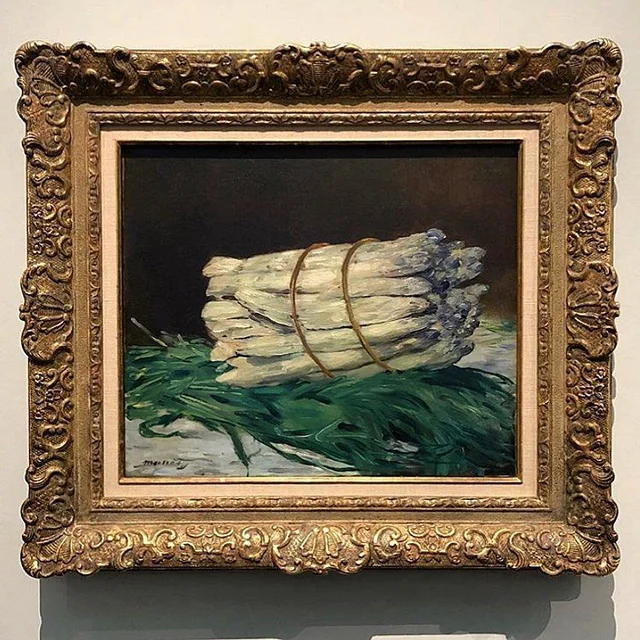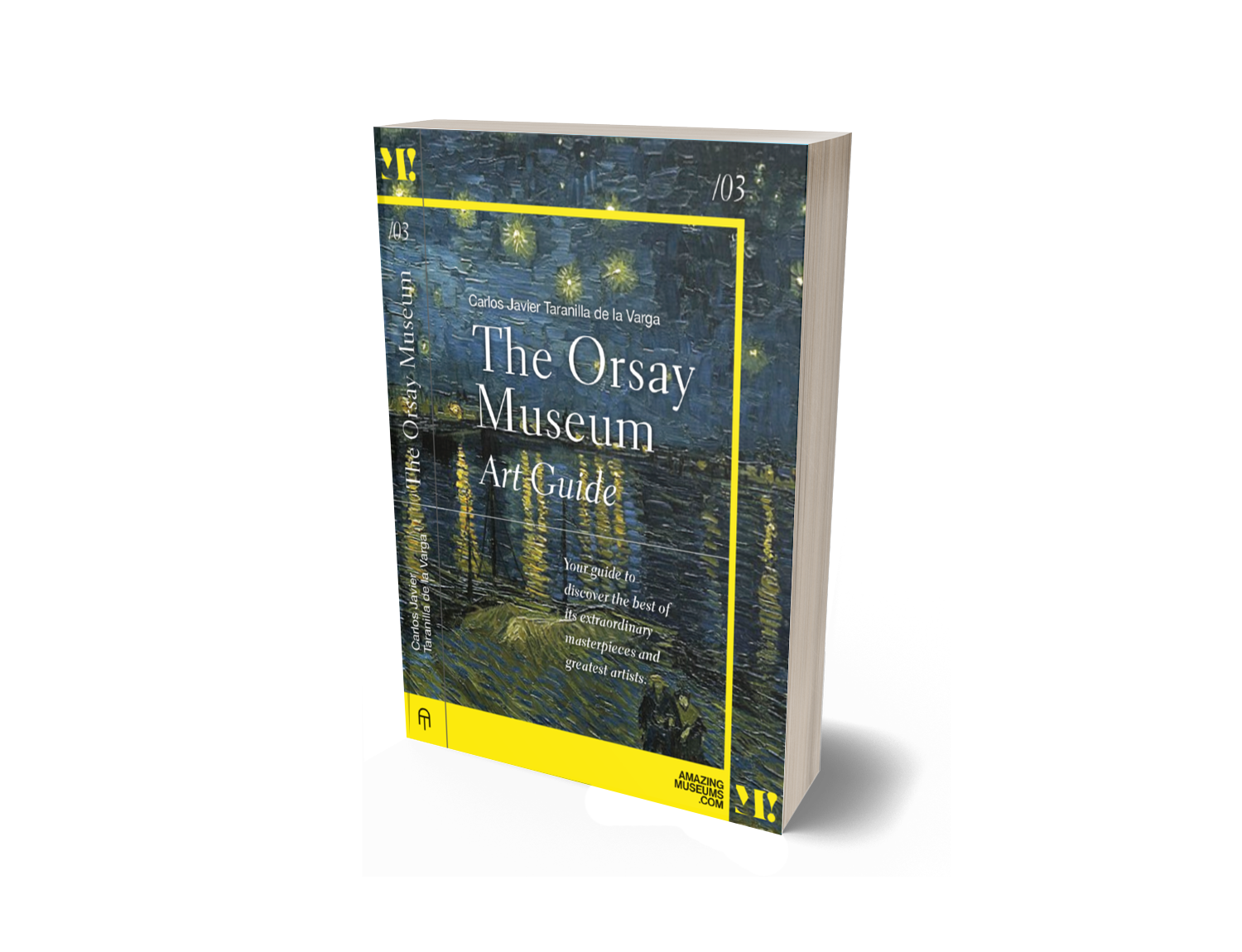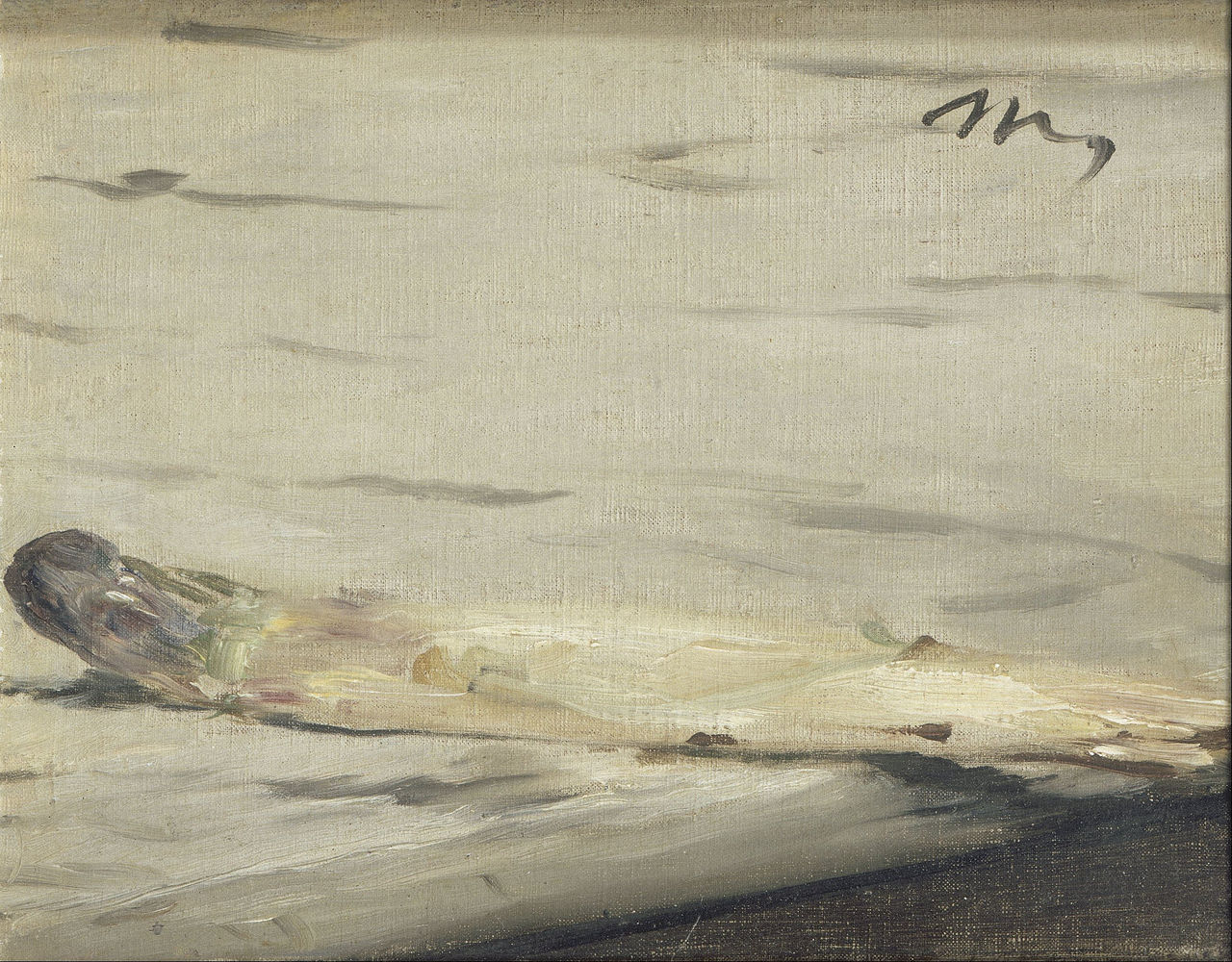
The hilarious story of Manet's "Une botte d'asperges"
 Edouard Manet was one of the most influential painters of the 19th century. His work is characterized by its boldness, modernity and elegance. Among his many creations, there is one that stands out for its simplicity and symbolism: asparagus. However, this work also stands out for the hilarious story behind it.
Edouard Manet was one of the most influential painters of the 19th century. His work is characterized by its boldness, modernity and elegance. Among his many creations, there is one that stands out for its simplicity and symbolism: asparagus. However, this work also stands out for the hilarious story behind it.
In 1880, Manet was commissioned by Charles Ephrussi, a wealthy art collector and editor of the magazine La Gazette des Beaux-Arts. Ephrussi asked him to paint a bunch of asparagus, a luxury product at the time. Manet accepted the challenge and produced a masterpiece of still life. With loose, vibrant brushstrokes, he captured the freshness and texture of the asparagus, placed on a white napkin. The dark background highlights the contrast between light and shadow, creating an effect of volume and depth.
Analysis of the painting "Bunch of Asparagus" by Manet
The painting Bunch of Asparagus by Manet is a still life painted in 1880 by French artist Édouard Manet. It is a work that depicts a traditional motif of Dutch Baroque painting, but in a modern, impressionistic style.
The artist places the bunch of asparagus in the foreground, on a bed of grass, silhouetted against a neutral background. The asparagus is tied with two willow sticks and looks fresh and juicy. The purple tips contrast with the yellow of the stems and the green of the leaves. The background is dark and uniform, which brings out the brightness and colorfulness of the asparagus.

Manet paints this work with great speed and ease, moving away from the hyper-realistic representation of the elements. His brushwork is broad and impastoed, but also precise and detailed in places. The artist manages to create a sense of volume and texture with light and color, without resorting to chiaroscuro or line drawing.
The secret of "Manet's Bunch of Asparagus."
Ephrussi was so delighted with the painting that he paid Manet 1,000 francs, 200 more than agreed upon. Manet, grateful for the gesture, decided to send him another gift: a small painting with a single asparagus spear, accompanied by a note that read: "One asparagus spear was missing from your bunch". With this detail, Manet demonstrated his sense of humor and his generosity. He also expressed his friendship and respect for Ephrussi, who appreciated the value of his art.

The painting shows a single asparagus on a marble slab, in a simple but novel composition. The asparagus is off-center and from an unusual point of view, almost horizontal and parallel to the lower edge of the canvas. Most of the space is occupied by the white surface of the panel, with vertical brushstrokes suggesting the veins of the marble. In the upper right corner is the artist's signature, an "M" for Manet in black.
The asparagus has a rich color scheme, with shades of white, yellow, brown, green, blue, purple and red. With clearly recognizable individual brushstrokes and touches of color, Manet shows his impressionistic painting style. Some shadows below the two ends of the asparagus suggest a source of light on the vegetable.
Despite the simplicity of the subject, the painting has great artistic quality and deep significance. Manet succeeds in masterfully painting nature, light and color, creating an intimate and delicate atmosphere. The asparagus is a symbol of joyful and ephemeral life, as well as sensuality and eroticism. The fact that it is alone and cut off at the edge of the canvas also suggests a certain melancholy and loneliness.
The two paintings of the asparagus are preserved today in the Musée d'Orsay in Paris. They are testimonies of an exceptional artistic and human relationship, based on mutual admiration and recognition. Manet's asparagus are more than just vegetables: they are symbols of beauty, delicacy and harmony.
If you want to learn more about other Impressionist works, we recommend "Musée d'Orsay Art Guide", our book about the museum that houses the largest amount of Impressionist work in the world, as well as a must-have art guide to discover and learn the essentials of the great works, artists and styles of the Musée d'Orsay, soon available on Amazon.
